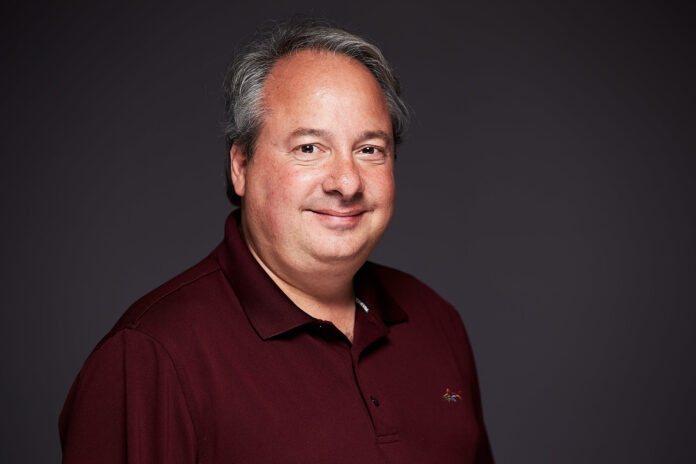The headlines read “Billionaire Jay Bloom saved from submarine disaster.” For quite some time after the doomed Titan submersible sank on June 18 while seeking the ruins of the Titanic, Jay Bloom was headline news. Jay and his son Sean had been in talks with OceanGate CEO Stockton Rush to be part of the crew on the Titan, but they eventually pulled out due to safety concerns. I spoke to Jay about the ordeal (see accompanying article after Lunchbreak).
The story of Jay Bloom’s life would make great fiction if it weren’t true. Jay built up his impressive career with several different businesses, each of which could have propelled him to success in its own right. But instead of stopping, he strung together several of those successes in succession. His ventures included health insurance for pets, the stock market, helicopter rides, small photography studios, property development, and buying million-dollar homes for $100. There’s no better example of someone who finds opportunities and capitalizes on them.
Jay is soft-spoken; he speaks about his business moves in a surprisingly calm and candid manner. In his eyes, his success is straightforward: He thinks of interesting ways to make money and then follows through—“simple” as that. This one’s a fun read. Enjoy! —Nesanel
I was born on an Air Force base in Tachikawa, Japan, because my father was in the Air Force at the time. We returned to the US when I was about two years old.
“I went to Hebrew school for five years. I had a bar mitzvah celebration and got my own tallis and tefillin.
“In college, I started a company called Magnavest. I traded other people’s money and covered call option writing strategies. A call option is basically a contract to purchase a specific stock at a specific price on a specific date. Buying options can be highly speculative and very risky. Covered call option writing caught my attention because it has fairly good returns along with fairly low risk. I wound up doing about a million dollars a month in trades for other people’s accounts, and I got a management fee plus a percentage.
“I graduated college when I was 20 years old and got a job at Manufacturers Hanover Trust world headquarters in Manhattan. I got fast-tracked to be an officer and worked on portfolio risk management. At that time, we were just coming off of LDC, meaning lesser-developed country portfolios that have a lot of issues. The bank had billions of dollars in debt that was defaulting. Our group was tasked with putting together a system to avoid having such exposure again. The thought was to apply equity portfolio theory, like a diversification strategy, to a global bank loan portfolio. In other words, it was about being mindful of who we already had given loans to when we were making a new loan, and avoiding concentrations in any one bucket.
“We built a very complex matrix and management system that could identify hundreds of factors. For example, take oil prices. When oil companies do well, the airlines get slaughtered. So we would balance our loan portfolio for the price of oil between airlines and oil companies. We didn’t want to get too heavily concentrated on airlines and have the oil prices go up.
“For the last three years at the bank, I moved over to their real estate group. They wanted me to do the same thing for their portfolio that I did for the global group—to balance their risk between commercial and residential through analysis of their industry sector. That was the beginning of my real estate experience.
“We emphasized the importance of not having too heavy of a concentration in any one industry or sector of the real estate market, whether that be residential, condos or warehouses. It’s about how you diversify your investments, such as how you manage your portfolio, so that you don’t have too much exposure to residential mortgages. A lot of banks were doing collateralized mortgage obligations and packing loans and lending to everyone, and they got wiped out when the market crashed.
“It’s also key to understand the interrelationship among the different sectors. For example, we would say that only a certain percentage of the portfolio can be subprime mortgages; you could have a great subprime loan, but the loan officer would be told not to give it because there was too much exposure from corporate.
“I worked in the bank for ten years, during which time I also got my MBA and got married. The bank gave six weeks of vacation a year, in addition to all of the bank holidays, and they actually required you to take two or three weeks off consecutively—on the theory that if you’re doing something wrong, it will surface while you’re gone. Fortunately, my wife and I love to travel, so we got to see a lot of different places.
“While I was working at the bank, my wife and I started a company called Pet Assure. I had a golden retriever who developed hip dysplasia, and his surgery cost thousands of dollars. It seemed to me that there should be health insurance for pets, just as there is for people. My wife and I thought people would pay a monthly fee of $9.95 to be guaranteed discounts at specific veterinarians. The veterinarians were happy to give a discount, as we would bring them business.
“We were both working full time at our day jobs, but we managed to build a network of about 2,200 veterinarians around the country. Eventually we added groomers, trainers and pet-sitters, too. We sold access to memberships through an employee benefits program with large companies. These companies would just do payroll deductions. If they had 1,000 employees, they’d send us $10,000 a month along with an electronically registered list of the employees. We didn’t give the company any money, they just wanted to offer the benefit to their employees for the sake of employee retention.
“At Pet Assure’s peak, we had about three dozen salaried employees. After a year, we received a really generous offer, so we sold it. The company is still around today.
“We made enough from the sale that I retired at 33. That’s when our son, Sean, was born. I took some time off to be with my family, but I wasn’t doing enough with my days, so I decided to take up a hobby: flying model helicopters. However, when I realized that it would cost thousands of dollars, I said to myself, ‘For that money, I can get my pilot’s license and fly a real helicopter.’
“It took about a year’s worth of weekends, but I got my helicopter license. I bought my own helicopter, but after I didn’t use it for about three months, I decided to put it into commercial service. I only have a private license, so I can’t fly commercially, and I wound up buying the helicopter flight school where I got my license. Within a year, I owned seven helicopters. We got our Part 135 certification from the FAA, which allowed us to do paid charter flights. Back then, retail for an hour of flight time was about $400, and it would cost us $100.
“I built a business model on a two-pronged observation: 1) that most people have never been in a helicopter, but they want to try it, and 2) the most exciting part of flying is the takeoff and the landing; the plateau is not really that exciting. So we wanted to put a helicopter in the middle of a high-volume transient population and do short-duration flight passes at a low price point. This specific helicopter has four seats, one for the pilot and three for passengers. We charged $25 a person, which was unheard of for a helicopter ride at the time. The pilot would go up, fly in a circle, and come back down, all in three minutes. We were making $75 every three minutes. It came out to $1,500 an hour on a $100 operating cost.
“I arranged to use the end of the pier in Seaside Heights, New Jersey, as a helipad. We had two-hour lines all day long, every day. We were taking cash out by the wheelbarrow. I bought more helicopters and opened up in Atlantic City and Wildwood, New Jersey. These amusement piers would get a million people in three months, people who were there to play games and go on rides. They would see our helicopters go up and down, and that was all the marketing we needed.
“I was in negotiations with Six Flags to do this at every theme park. Then 9/11 happened, and no one wanted to go on flights anymore. Helicopter insurance went up by a factor of ten, and people were afraid of aircraft.
“Shortly before 9/11, Eastman Kodak approached me to put photography stands at the helipads, where people could take a picture near the helicopter and buy it as a souvenir. We were doing a per capita revenue of $4 a person just for photos, on average. After September 11, I took that Kodak relationship and developed a company, Nactor, to provide souvenir photography at theme parks, amusement parks, zoos and aquariums. We staffed and operated the stands, and we split the revenues with the park.
“It was a good business, but client retention was very difficult. The venues would see the profitability and say, ‘Why do we need a third party? Let’s just do this ourselves.’ I constantly had to find new venues just to break even.
To read more, subscribe to Ami





















